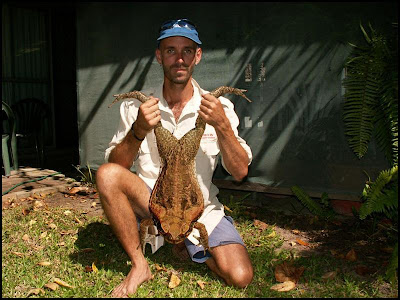Killer Frogs - toxic, run for hills people
Killer frogs found at golden gate in California - OMG! Run for the hills, save yourself and your baby - maybe the hubby if you think he is worth it. But by all means run, run, run!!
Wait... Breaking news: killer frog is toxic only to animals not humans? Oh, so sorry for the scare. So what's the big deal and why did the news on google have titles like: Killer frogs found! I guess it's easier to attract visitors and views if you exaggerate a bit ( I'm guilty of that here).
 So what is a killer frog? The killer frog is technically: the Cane Toad.
So what is a killer frog? The killer frog is technically: the Cane Toad.The cane toad (Bufo marinus), also known as the giant neotropical toad or marine toad, is a large, terrestrial true toad which is native to Central and South America, but has been introduced to various islands throughout Oceania and the Caribbean. It is a member of the subgenus Rhinella of the genus Bufo, which includes many different true toad species found throughout Central and South America. The cane toad is a prolific breeder; females lay single-clump spawns with thousands of eggs. Its reproductive success is partly because of opportunistic feeding: it has a diet, unusual among anurans, of both dead and living matter. Adults average 3.9–5.9 inches in length; the largest recorded specimen weighed 5.8 lb with a length of 15 inches from snout to vent.
The cane toad is an old species. A fossil toad (specimen UCMP 41159) from the La Venta fauna of the late Miocene of Colombia is indistinguishable from modern cane toads from northern South America.[5] It was discovered in a floodplain deposit, which suggests the B. marinus habitat preferences have always been for open areas.[6]
The cane toad has poison glands, and the tadpoles are highly toxic to most animals if ingested. Because of its voracious appetite, the cane toad has been introduced to many regions of the Pacific and the Caribbean islands as a method of agricultural pest control. The species derives its common name from its use against the cane beetle (Dermolepida albohirtum). The cane toad is now considered a pest and an invasive species in many of its introduced regions; of particular concern is its toxic skin, which kills many animals—native predators and otherwise—when ingested.
read more on: Cane toad
Comments